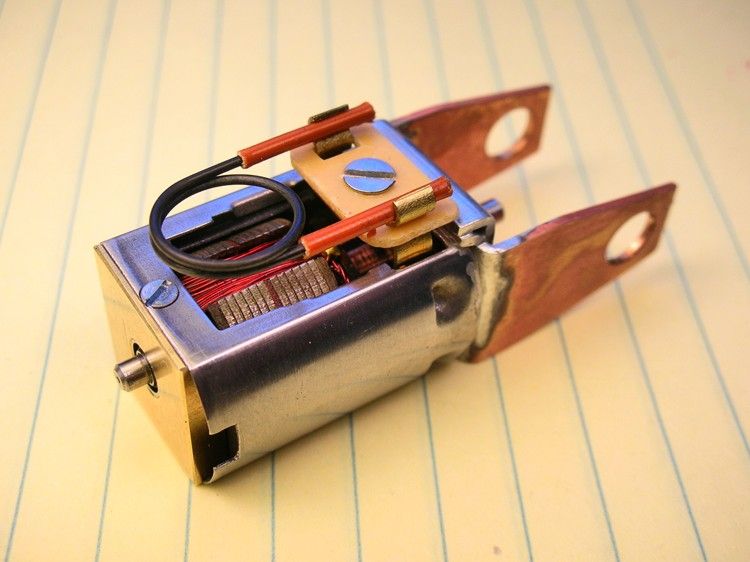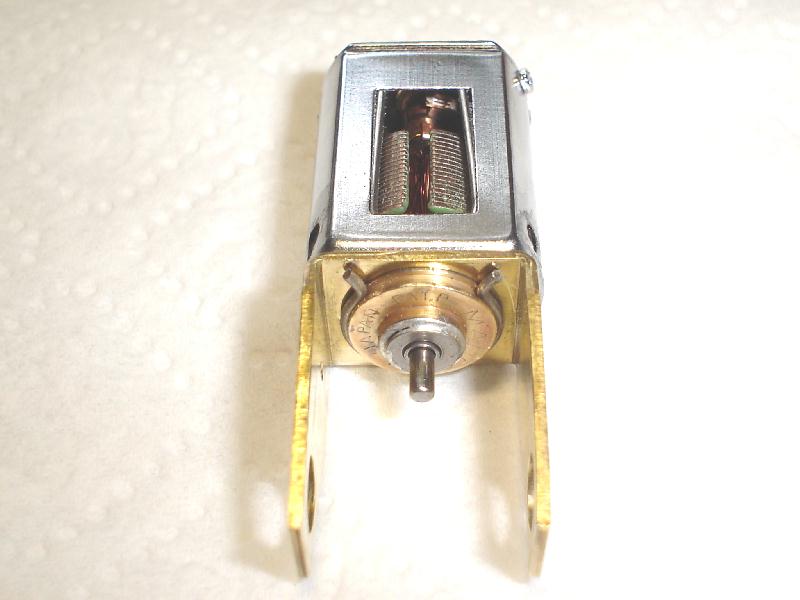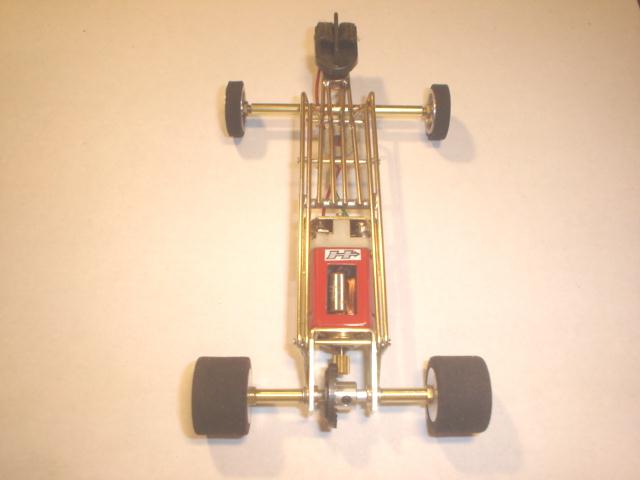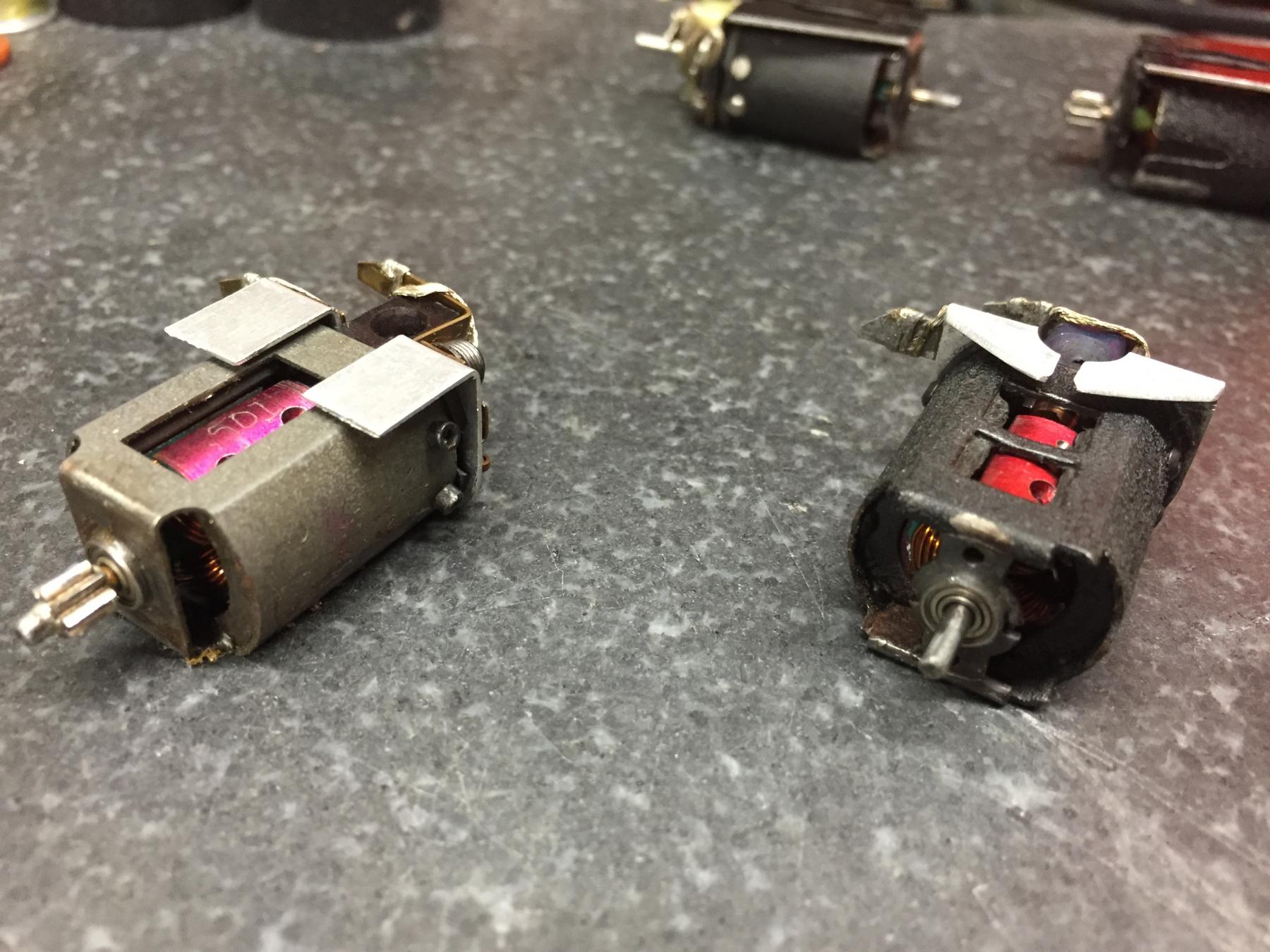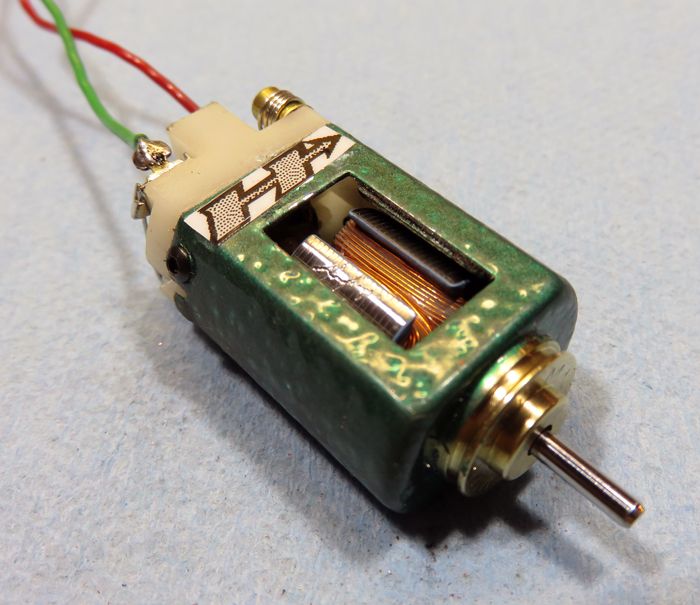Is it the "FJ13UO"?... the "FT13UO"? No matter, the littlest Mabuchi, their "homeset motor" had a lot going for it.
First off, just its size filled a niche the bigger Mabuchi cans weren't so comfortable in, and builders could easily scratchbuild a 1/32 F1 car around the motor. No, it wasn't short, but it was very thin... about as thin as you could go and still put a .510" arm in there. I screwed-around with a bunch of these as a kid and, if my memory is correct, they were of the "red" persuasion (Monogram?). They were/are a really appealing package... on paper anyway, and it was a real mind-tweak going from the relatively huge FT36D to the 13UO. Of course, the absolute worst part about these motors was the appallingly weak magnets... and there wasn't any better option if I remember correctly, but things have sure changed.
The endbell on the "13" was both good and bad. "Bad" because of how thin, fragile, and (like all the Mabuchis) how prone to melting it was. The (very) good was, the endbell hardware was a dead-bang ringer for the later Mura-type brush hoods that became the standard... only sort of "inverted". By spreading out the heat over a larger area than even Mabuchi's own "heatsinks", and doing a good job of keeping the brushes perpendicular to the comm, Mabuchi had landed on a superior design, and one you can see still reflected today in the hardware of most motors. Of course, it seems Mabuchi themselves didn't realize what they had there.
All this comes back to me every time I work on a 13UO and I'm reminded of how cool... and overlooked... the lowliest Mabuchi was. I get a smile every time I think about the fact that the modern "FK" type motors and even more so the SCX RX42 and similar are among some of the more popular motors around, and yet back in the day, the FJ13UO was strictly "kids stuff".
-john








